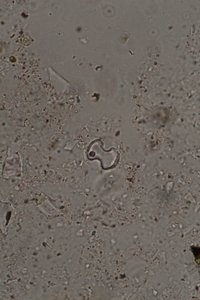The aim of my visit to the Smithsonian Tropical Research Institute (STRI) in Panama was to learn the basic techniques of phytolith analysis under the supervision of Dr. Dolores Piperno, one of the main leading experts in the field. Phytoliths are siliceous microfossils produced by plants, which are often preserved in the sediment record and can be used to reconstruct past vegetation changes. My motivation to learn this technique is to perform this type of analysis in sediment cores from the Atacama Desert, where the vegetation history is poorly documented.
During my two weeks stay at the STRI I could learn the different steps involved in phytolith analysis in a practical way. I learnt how to process sediment samples to isolate phytoliths, a process involving density separation with heavy liquids; how to extract phytoliths from plant material for a reference collection of the local vegetation, which aids in the correct identification of the phytoliths recovered from the sediment; and the basics of phytolith identification based on the characteristic morphology of phytoliths produced by different plant groups, for which I could work with slides from Dr. Piperno´s extensive collection of South American plants. In addition, I could also work on the identification of phytoliths s from my study site in the Atacama Desert.
Emma Fernandez Galego
PhD student
Institute of Geology and Mineralogy
PhD project: “Diatom and phytolith analysis in sediment cores from the hyperarid Atacama Desert”.
